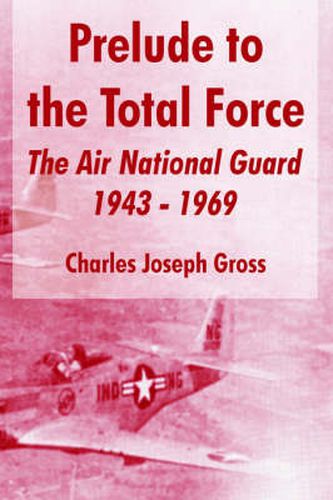Readings Newsletter
Become a Readings Member to make your shopping experience even easier.
Sign in or sign up for free!
You’re not far away from qualifying for FREE standard shipping within Australia
You’ve qualified for FREE standard shipping within Australia
The cart is loading…






This title is printed to order. This book may have been self-published. If so, we cannot guarantee the quality of the content. In the main most books will have gone through the editing process however some may not. We therefore suggest that you be aware of this before ordering this book. If in doubt check either the author or publisher’s details as we are unable to accept any returns unless they are faulty. Please contact us if you have any questions.
The expanding role of the Guard and its close cooperation with the Air Force are Dr. Gross’ themes, explaining the rise of the Guard to the prominence it plays in today’s air operations. He pulls no punches in recounting the conflict between Guard and regular Air Force, or in explaining how each side maneuvered to safeguard its interests. However, the author also shows how common concerns and mutual dedication to the national defense overcame parochialism and led from cooperation to integration. The result was displayed for all the Air Force to see in the professionalism of Guard units in the 1960s mobilizations. Guard and regular Air Force had become vital to each other; in return for modern aircraft, a substantial peacetime mission, and upon mobilization integration into the wartime force, the Guard accepted de facto control by the regular Air Force. As Dr. Gross concludes, the concept of state militia was altered far beyond the changes wrought earlier in federal-state military relations. The Air Guard was ready for the Total Force policy of the 1970s. The dilemma of maintaining a reserve fully capable of fighting the air was solved. By the 1980s, the Air National Guard, at the same inheritors of a military tradition extending back before 1776, and users of the most advanced technologies of war, could prove that citizen-soldiers need not to be second to any airman in the world. Contents: Forged in Politics, 1943 - 1946 Struggle for Control, 1946 - 1950 Rejuvenation, 1950 - 1953 Integrating with the Active Force, 1953 - 1960 The Cold Warriors, 1961 - 1962 Vindication, 1963 - 1969 Epilogue: The Air National Guard and the Total Force
$9.00 standard shipping within Australia
FREE standard shipping within Australia for orders over $100.00
Express & International shipping calculated at checkout
This title is printed to order. This book may have been self-published. If so, we cannot guarantee the quality of the content. In the main most books will have gone through the editing process however some may not. We therefore suggest that you be aware of this before ordering this book. If in doubt check either the author or publisher’s details as we are unable to accept any returns unless they are faulty. Please contact us if you have any questions.
The expanding role of the Guard and its close cooperation with the Air Force are Dr. Gross’ themes, explaining the rise of the Guard to the prominence it plays in today’s air operations. He pulls no punches in recounting the conflict between Guard and regular Air Force, or in explaining how each side maneuvered to safeguard its interests. However, the author also shows how common concerns and mutual dedication to the national defense overcame parochialism and led from cooperation to integration. The result was displayed for all the Air Force to see in the professionalism of Guard units in the 1960s mobilizations. Guard and regular Air Force had become vital to each other; in return for modern aircraft, a substantial peacetime mission, and upon mobilization integration into the wartime force, the Guard accepted de facto control by the regular Air Force. As Dr. Gross concludes, the concept of state militia was altered far beyond the changes wrought earlier in federal-state military relations. The Air Guard was ready for the Total Force policy of the 1970s. The dilemma of maintaining a reserve fully capable of fighting the air was solved. By the 1980s, the Air National Guard, at the same inheritors of a military tradition extending back before 1776, and users of the most advanced technologies of war, could prove that citizen-soldiers need not to be second to any airman in the world. Contents: Forged in Politics, 1943 - 1946 Struggle for Control, 1946 - 1950 Rejuvenation, 1950 - 1953 Integrating with the Active Force, 1953 - 1960 The Cold Warriors, 1961 - 1962 Vindication, 1963 - 1969 Epilogue: The Air National Guard and the Total Force